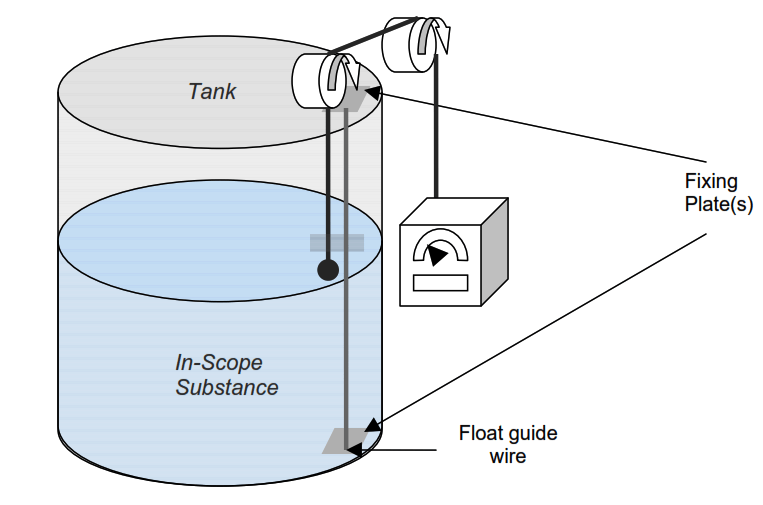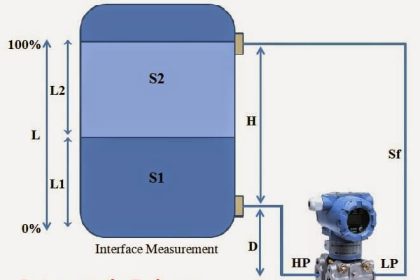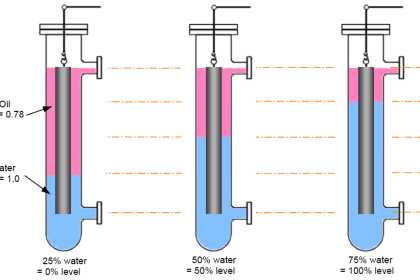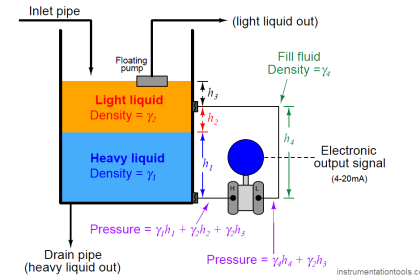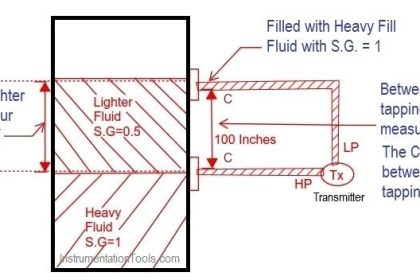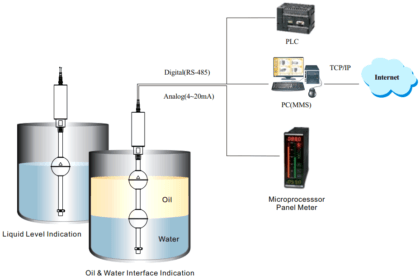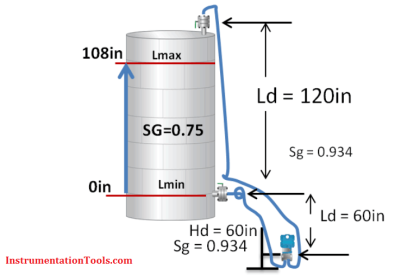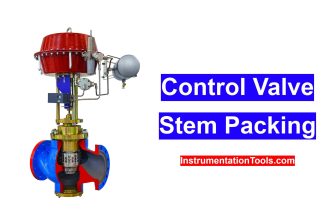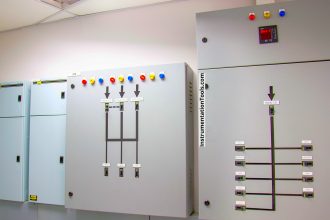Inductively Coupled Wire Guided Float Detectors is an old method of level measurement used in the fuel storage industry. This system has a wire that is fixed at both the top and bottom of the tank and is used as a guide and a source of power for the float. The float contains an inductively coupled transducer, powered by the guide-wire.
During operation the primary coupling of the transducer is periodically interrupted, allowing a secondary inductive coupling of the transducer between the wire and float transducer. Level Measurement is achieved through conductors placed at known intervals on the guide-wire, which produces a ‘grey’ encoded-word that is then communicated back up to the display unit.
Wire Guided Float Detectors
This type of system should only be used in ‘clean’ measuring applications, therefore it is suitable for gasoline level measurement.
This is a widely used level measurement method, however, its perceived accuracy is not considered good enough for either custody transfer or stock accounting measurement.
Another drawback with inductively coupled wire-guided floats is that they can be prone to ‘tape hang-ups’. This can occur when material builds up on the guide-wire which then hinders the movement of the float. This problem would become worse with viscous material measurement.
Components of inductively coupled wire-guided float systems are prone to accelerated wear because of continuous movement of the drive mechanism that is connected to the float on the liquid surface. Therefore the level of reliability of this method can be potentially poor.
Industry experts have spoken to suggest that this method of tank gauging should no longer be used because of the varying levels of reliability and accuracy of measurement, and the method’s high maintenance demands.
Float systems are becoming less commonplace mainly because the evolution of the other methods has advanced further than this method. Over time, as these systems break down, many fuel storage facilities are choosing to replace this type of system with different technology.
Read Next:
- Thermal Differential Level Sensors
- Level Switches for Storage Tanks
- Capacitance Level Sensor Principle
- Magnetostrictive Level Sensors
- Types of Industrial Level Sensors
